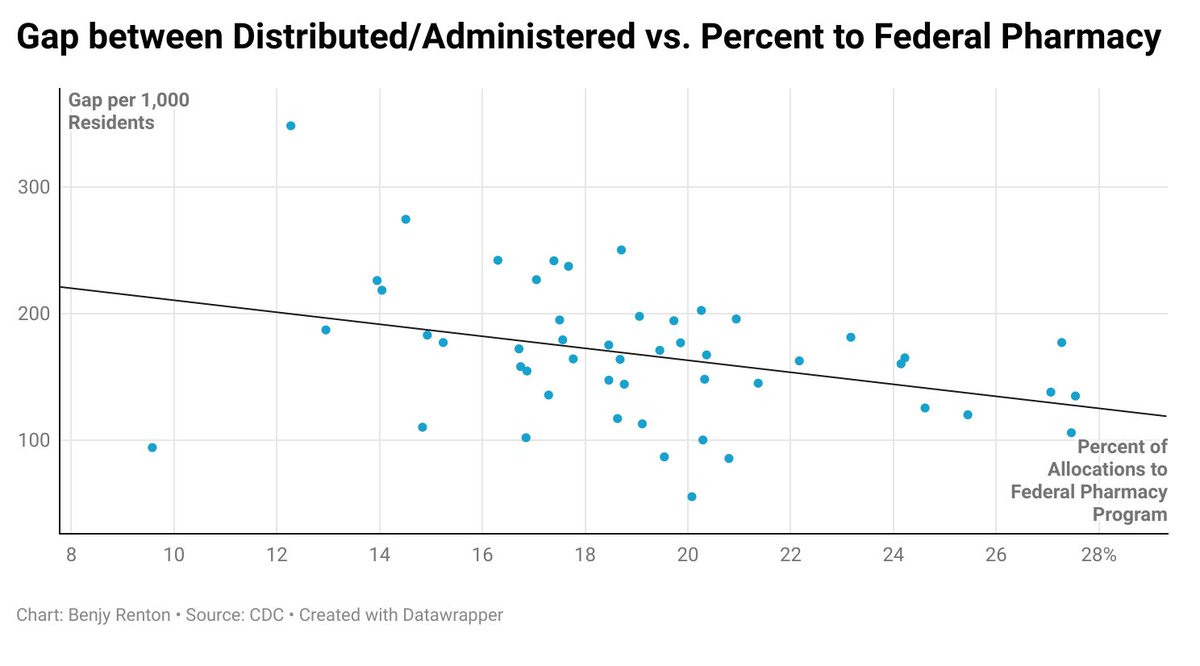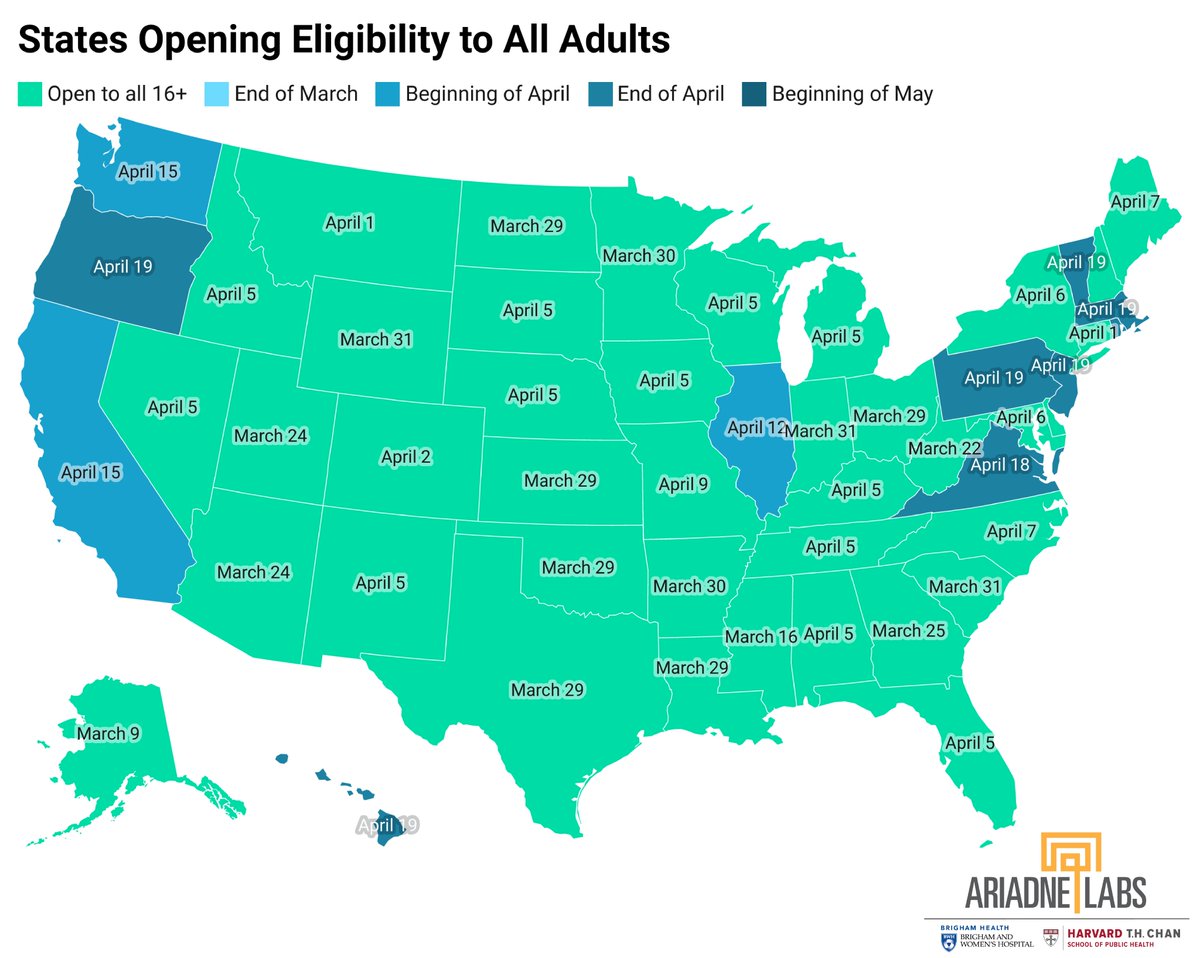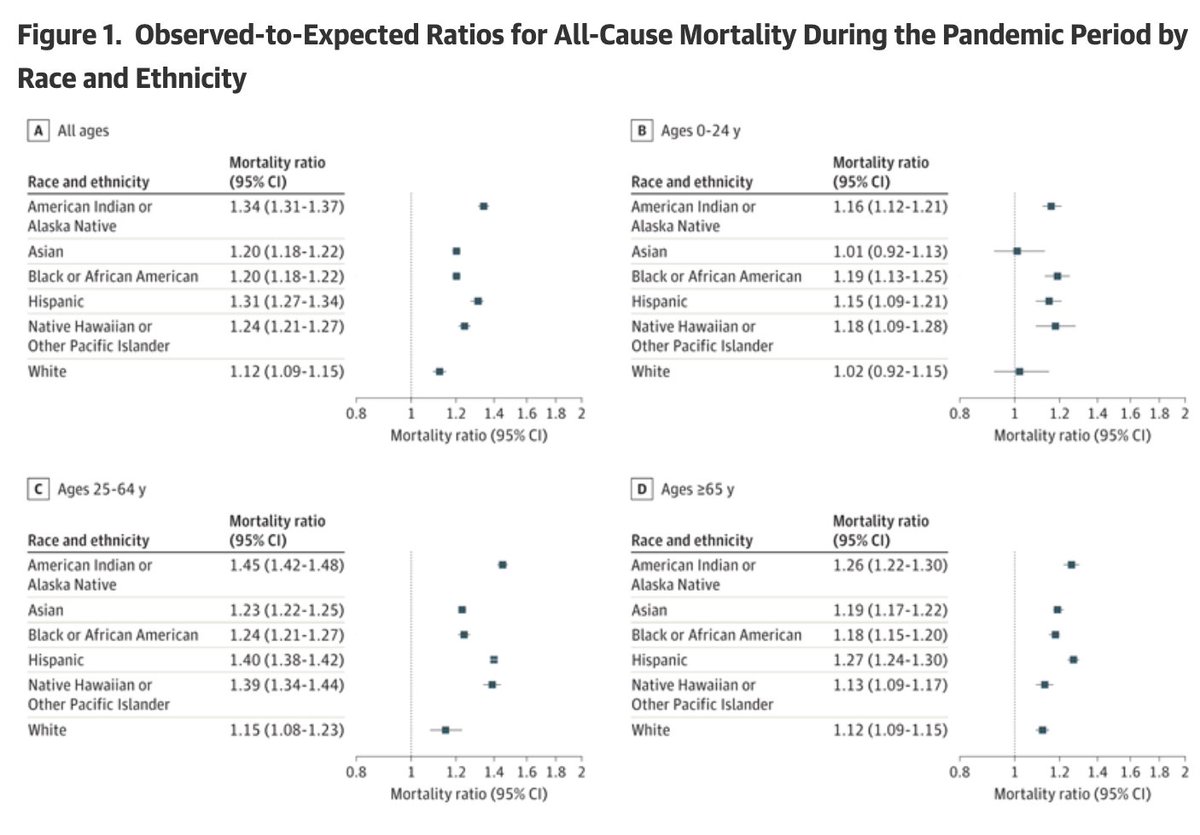In many places, America's vaccine supply problem has now morphed into a demand one. Some states now have thousands of doses and appointments and few people willing to take them, hindering the nation's progress to herd immunity. Thread/thoughts on the data:
nytimes.com/2021/04/09/hea…
nytimes.com/2021/04/09/hea…
The key metric we are monitoring here is the gap between doses distributed and administered (the "gap") — it's easy to find in CDC data. Acknowledging there may be data lags, darker states are seeing a bigger gap, pointing to delivery issues or hesitancy.

https://twitter.com/bhrenton/status/1380555828114100233

Let's take a look at Massachusetts and Mississippi. While the gap is increasing in all states, possibly pointing to the need for states' delivery systems to catch up, Mississippi's gap continues to increase since opening eligibility. 

So how do we fix this? Let's start with delivery. States need to continue investing in the infrastructure for delivery to all populations — especially the most vulnerable. This op-ed from @RWeintraubMD and colleagues outlines key steps.
https://twitter.com/bhrenton/status/1377090405246889987
We need to leave no doses on the table. States have delayed ordering hundreds of thousands of vaccine doses available to them, according to this report. This needs to be fixed immediately.
washingtonpost.com/health/2021/04…
washingtonpost.com/health/2021/04…
What are the delivery strategies that work? @ProfEmilyOster and I have been looking into the data from the federal pharmacy program. There is an association between the percent of doses allocated to the federal pharmacy program in states and a smaller "gap." 

With lower Johnson & Johnson allocations this month, states and localities need to overcompensate by surging doses as soon as possible to those communities. With the majority of states now open to all adults, outreach needs to begin now.

https://twitter.com/bhrenton/status/1380687024966008832

Now onto issues of hesitancy. @SemaSgaier and her team @SurgoVentures estimate that the national supply/demand shift will happen toward the end of April. 59% of the population now say they have already been vaccinated or want to be, according to this poll.
surgoventures.org/newsroom-all/a…
surgoventures.org/newsroom-all/a…

So what will help us close the gap?
1. Education. We need to boost trusted messengers through programs such as the Community Corps.
2. Access. We need to make booking appointments as easy as possible. We need to ensure that vaccines are close to people.
wecandothis.hhs.gov/covidcommunity…
1. Education. We need to boost trusted messengers through programs such as the Community Corps.
2. Access. We need to make booking appointments as easy as possible. We need to ensure that vaccines are close to people.
wecandothis.hhs.gov/covidcommunity…

In order to close the gap, we need to promote access and equity. Hesitancy will be addressed as a result. Think vaccination sites at train stations and supermarkets. The time is now, in states that have supply, to make it as easy as possible. Like this.
https://twitter.com/DidierPittet/status/1380404245124558849
• • •
Missing some Tweet in this thread? You can try to
force a refresh


















